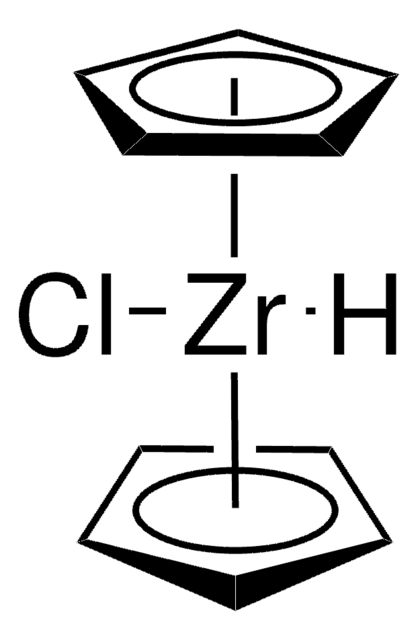373710
Molybdenum(VI) dichloride dioxide
Synonyme(s) :
Dichlorodioxomolybdenum
About This Item
Produits recommandés
Forme
flakes
Concentration
34.4-36.9% chloride (silver nitrate titration)
Densité
3.31 g/mL at 25 °C (lit.)
Application(s)
battery manufacturing
Chaîne SMILES
Cl[Mo](Cl)(=O)=O
InChI
1S/2ClH.Mo.2O/h2*1H;;;/q;;+2;;/p-2
Clé InChI
JCFNAADCQWXIJD-UHFFFAOYSA-L
Description générale
Application
- For thioacetalization of heterocyclic, aromatic, and aliphatic compounds.
- To synthesize mono-, di-, tri-, and tetracarbamates from alcohols and aromatic or aliphatic isocyanates.
- For stereospecific deoxygenation of epoxides to alkenes.
- For the synthesis of dihydropyrimidinone/thione and polyhydroquinoline derivatives via a Biginelli and Hantzsch reaction.
Mention d'avertissement
Danger
Mentions de danger
Classification des risques
Skin Corr. 1B
Code de la classe de stockage
8B - Non-combustible corrosive hazardous materials
Classe de danger pour l'eau (WGK)
WGK 3
Point d'éclair (°F)
Not applicable
Point d'éclair (°C)
Not applicable
Équipement de protection individuelle
Eyeshields, Faceshields, Gloves, type P3 (EN 143) respirator cartridges
Certificats d'analyse (COA)
Recherchez un Certificats d'analyse (COA) en saisissant le numéro de lot du produit. Les numéros de lot figurent sur l'étiquette du produit après les mots "Lot" ou "Batch".
Déjà en possession de ce produit ?
Retrouvez la documentation relative aux produits que vous avez récemment achetés dans la Bibliothèque de documents.
Les clients ont également consulté
Notre équipe de scientifiques dispose d'une expérience dans tous les secteurs de la recherche, notamment en sciences de la vie, science des matériaux, synthèse chimique, chromatographie, analyse et dans de nombreux autres domaines..
Contacter notre Service technique









